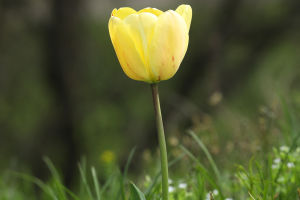Mint is a widely cultivated herb, celebrated for its refreshing aroma and distinctive taste. Known by its Latin name Mentha, this herb is a member of the Lamiaceae family.
Mint has a rich history and holds significant importance in various cultures and daily life across the globe.
The leaves of the mint plant are typically oval-shaped, with serrated edges, and grow on square stems. The leaves are predominantly green. The refreshing scent of mint is attributed to the volatile oils in its leaves, particularly menthol, which explains why mint is extensively used in food, beverages, medicine, and cosmetics.
There are numerous varieties of mint, with peppermint and spearmint being the most common. Peppermint is often used in the production of mints, chewing gum, and toothpaste, while spearmint is commonly used in cooking and seasoning.
In the Middle East, mint leaves are often brewed into mint tea, a beverage that not only quenches thirst but also aids in digestion. This tea has also gained popularity in Western countries, where it is valued for alleviating stress and enhancing mental focus.
The medicinal properties of mint have been recognized since ancient times. In traditional medicine, mint is believed to possess the ability to clear heat, detoxify the body, and alleviate heat-related symptoms. It is often used to treat conditions such as colds, headaches, and sore throats.
Additionally, mint is utilized for its anti-inflammatory and analgesic properties, which effectively relieve symptoms like stomach discomfort, indigestion, and nausea. Peppermint oil, known for its strong cooling sensation, is widely used to treat muscle pain and alleviate skin itching.
Beyond its medicinal uses, mint is also a popular ingredient in cooking. Mint leaves are frequently used to season a variety of dishes, particularly in Mediterranean cuisine, where mint is a staple spice.
For instance, in Greece, mint is a key ingredient in tzatziki sauce, a sauce made from yogurt, cucumber, and mint leaves, which is often served with grilled meats or vegetables. In Southeast Asia, mint leaves are commonly used in spring rolls and salads to impart a refreshing flavor.
Mint plays an equally important role in dessert-making. Mint chocolate, mint ice cream, and mint candies are among the most popular mint-flavored desserts. Mint chocolate, which combines the coolness of mint with the sweetness of chocolate, offers a unique taste that is beloved by many.
Mint ice cream is a popular summer treat due to its refreshing flavor, while mint candies are often consumed to freshen breath, especially after meals or in social situations.
Growing mint is relatively simple, making it a popular choice for home gardens. Mint thrives in cool and moist environments and is not particularly demanding in terms of soil quality, although well-drained soil is preferable for optimal growth.
Mint grows rapidly, often spreading over a large area within a few months, so it requires regular pruning to prevent it from taking over the space of other plants. When planting mint in the spring or autumn, simply insert the stem into moist soil, water it moderately, and it will take root and sprout within a few weeks.
However, mint's vigorous growth can sometimes become a problem, as it may encroach on the growing space of other plants.
To avoid this issue, it is advisable to plant mint in pots or designated areas, which can help control its spread while still allowing for the convenience of having fresh mint readily available. Mint leaves can be harvested at any time and can be used fresh, made into tea, or dried and stored for later use.
Mint is not only useful in the kitchen but also plays a crucial role in gardening. Due to its strong scent, which repels certain pests, mint is often used as a natural insect repellent.
For example, planting mint can effectively deter aphids and mosquitoes, making it a popular choice for planting in courtyards or outdoor leisure areas. Additionally, mint attracts beneficial insects such as bees and butterflies, which assist in pollinating other plants in the garden, thereby promoting ecological balance.
As a versatile plant, mint offers a wide range of uses and considerable value. Whether used as a seasoning, a medicinal herb, or an ornamental plant, mint demonstrates its unique appeal in various aspects of life.
Whether enjoying a cool cup of mint tea in daily life or cultivating a few mint plants in the garden, this ancient yet contemporary plant adds a touch of freshness and vitality to any setting.


